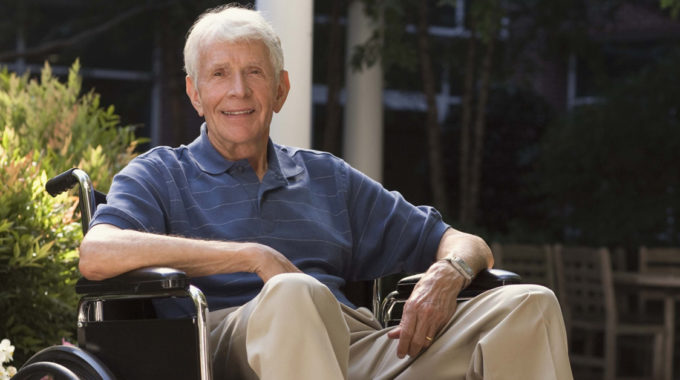
Bed Rest Does Not Have to Increase Disability for Seniors
Bed rest serves as a time-honored recommendation for both injury and illness. However, seniors often underestimate the side effects of bed rest. It’s easy to assume that retirees can bounce back from bed rest just like they did when they were younger, but the facts show otherwise. Disability assessments and supervised rehabilitation programs are often indicated, but families will need to be their own advocates in asking for these services. When patients meet homebound criteria, Medicare-certified home health is often a good option, with a multispecialty approach and Medicare paying 100% of allowable charges.
The Effects of Bed Rest on the General Population
- During bed rest, trunk muscles and lower extremity muscles involved in gait and upright posture atrophy first.1
- For a group of young, healthy, male volunteers, five days of bed rest resulted in an 8% decline in knee extensor strength.2
- Seven to ten days of bed rest for healthy volunteers resulted in a 10-34% decrease in whole-body insulin sensitivity, and a 47% to 75% decrease in the forearm and leg.3,4 Decreased insulin sensitivity refers to how the body’s cells will respond to insulin less efficiently and manage blood glucose less effectively.
- In a group of healthy, male volunteers, two weeks of reduced activity (1,350 steps daily) resulted in a 7% decrease in maximal oxygen uptake.5 Maximal oxygen uptake (or VO2 Max) refers to the maximum amount of oxygen that an individual can utilize during intense or maximal exercise. Many authorities consider this indicator to be the best measure of cardiovascular fitness and aerobic endurance. It has direct links to mortality rates.3
Effects of Bed Rest on People Over Age 59
As we age, we lose conditioning faster and regain it more slowly.
- Among a test sample of healthy subjects age 67 and older, 10 days of bed rest resulted in more lean tissue loss than 28 days of bed rest caused in younger test subjects.6,7 In other words, seniors at rest lose muscle mass at nearly three times the normal rate.
- The loss of maximum oxygen intake capacity was twice as pronounced among patients age 60+.8
- For patients over the age of 75, two days or more of hospitalization is associated with increased disability in one out of ten cases.7
- Where two weeks of rehabilitation restored insulin sensitivity among young patients, it did not among patients around age 70.9
Home Health Sends Physical Therapy At No Cost To Seniors
Most seniors do not fully recover from bed rest in a timely fashion. Rather, they adapt to their newly lowered level of fitness. It doesn’t have to be this way, though. Intensive exercise can improve the odds of full recovery, speed recovery, and prevent injuries that would only compound the problems. Keep in mind that recovery from disuse weakness happens slower than the rate of loss. With intensive exercise, patients require 2.5 weeks of rehab per week of bed rest.10,11 This may be even longer for seniors who lose strength faster from disuse and gain strength more slowly from exercise. A healthcare professional such as a physical therapist can help seniors develop the most efficient exercise plan and make sure they exercise at the right intensity for rapid recovery.
Conclusion
For seniors, bed rest means that recovery is not over after the injury heals or illness fades. Seniors also need to think about recovering from the strength and fitness loss caused by inactivity. It’s important to not underestimate how disuse affects seniors differently.
References
- Narici M, Monti E, Franchi M, Sarto F, Reggiani C, Toniolo L, Pisot R. Biomarkers of muscle atrophy and of neuromuscular maladaptation during 10-day bed rest. European Journal of Translational Myology. 2020;30(1):23-4.
- Mulder E, Clément G, Linnarsson D, Paloski WH, Wuyts FP, Zange J, Frings-Meuthen P, Johannes B, Shushakov V, Grunewald M, Maassen N. Musculoskeletal effects of 5 days of bed rest with and without lo-comotion replacement training. European Journal of Applied Physiology. 2015 Apr;115(4):727-38.
- Narici M, De Vito G, Franchi M, Paoli A, Moro T, Marcolin G, Grassi B, Baldassarre G, Zuccarelli L, Biolo G, Di Girolamo FG. Impact of sedentarism due to the COVID-19 home confinement on neuromuscular, cardiovascular and metabolic health: Physiological and pathophysiological implications and recommendations for physical and nutritional countermeasures. European Journal of Sport Science. 2020 May 12:1-22.
- Sonne MP, Alibegovic AC, Højbjerre L, Vaag A, Stallknecht B, Dela F. Effect of 10 days of bedrest on metabolic and vascular insulin action: a study in individuals at risk for type 2 diabetes. Journal of Applied Physiology. 2010 Apr;108(4):830-7.
- Slentz CA, Houmard JA, Kraus WE. Modest exercise prevents the progressive disease associated with physical inactivity. Exercise and Sport Sciences Reviews. 2007 Jan 1;35(1):18-23.
- Karinkanta S, Pirrtola M, Sievanen H, et al. Physical therapy approaches to reduce fall and fracture risk among older adults. Nat Rev Endocrinol. 2010; 6: 396-407.
- Sourdet S, Lafont C, Rolland Y, Nourhashemi F, Andrieu S, Vellas B. Preventable iatrogenic disability in elderly patients during hospitalization. Journal of the American Medical Directors Association. 2015 Aug 1;16(8):674-81.
- Pišot R, Marusic U, Biolo G, Mazzucco S, Lazzer S, Grassi B, Reggiani C, Toniolo L, Di Prampero PE, Passaro A, Narici M. Greater loss in muscle mass and function but smaller metabolic alterations in older compared with younger men following 2 wk of bed rest and recovery. Journal of Applied Physiology. 2016 Apr 15;120(8):922-9.
- McGlory C, von Allmen MT, Stokes T, Morton RW, Hector AJ, Lago BA, Raphenya AR, Smith BK, McArthur AG, Steinberg GR, Baker SK. Failed recovery of glycemic control and myofibrillar protein synthesis with 2 wk of physical inactivity in overweight, prediabetic older adults. The Journals of Gerontology: Series A. 2018 Jul 9;73(8):1070-7.
- Alibegovic AC, Sonne MP, Højbjerre L, Bork-Jensen J, Jacobsen S, Nilsson E, Færch K, Hiscock N, Mortensen B, Friedrichsen M, Stallknecht B. Insulin resistance induced by physical inactivity is associated with multiple transcriptional changes in skeletal muscle in young men. American Journal of Physiology-Endocrinology and Metabolism. 2010 Nov;299(5):E752-63.
- Muller E. Influence of training and inactivity on muscle strength. Arch Phys Med Rehabil. 1970; 51: 449-62.






